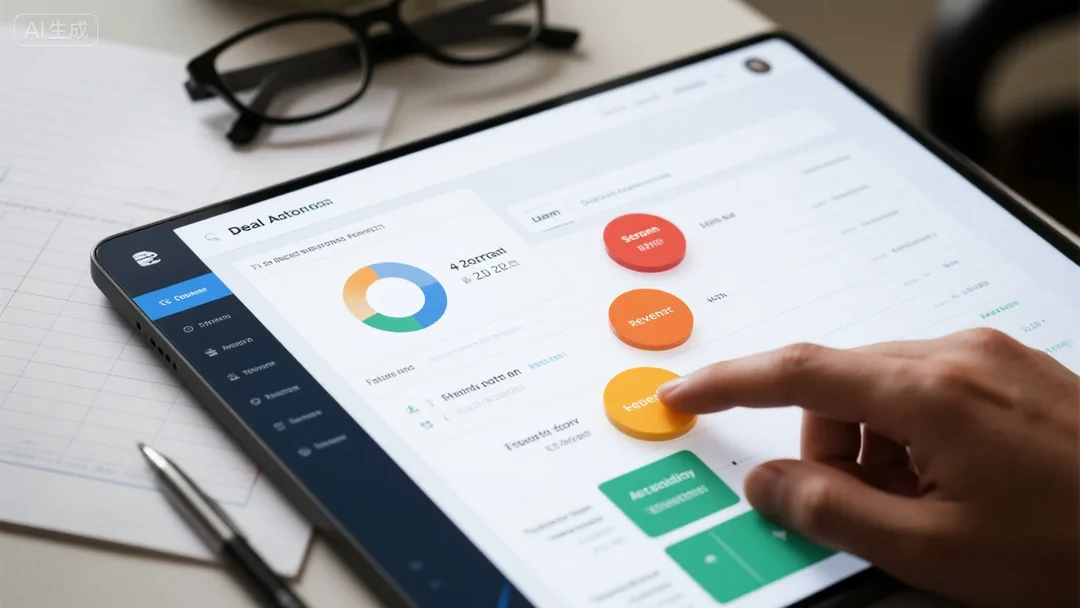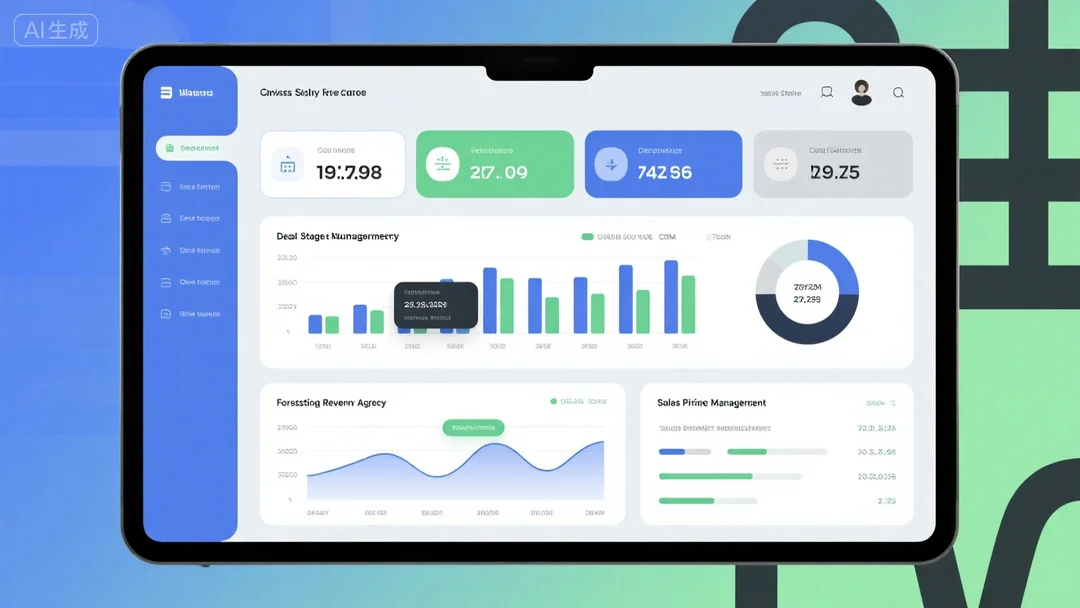Boost your agency’s revenue with the 2024 Sales Pipeline Management CRM Guide—proven to cut forecast errors by 35% and speed deals 32% faster (SEMrush 2023). Whether you’re optimizing HubSpot’s drag-and-drop automation or Salesforce’s advanced analytics, this guide reveals how custom deal stages, AI-driven forecasting, and real-time automation turn messy pipelines into predictable revenue. Gartner says 70% of agencies will use AI CRM tools by 2025—here’s how to get ahead: Compare “HubSpot’s Breeze AI vs Salesforce Flow,” unlock a free Pipeline Health Checker, and see how agencies like Adobe boosted win rates 15% with AI. Don’t miss out: Modernize your pipeline now to close 25% more high-value deals this quarter.
Sales Pipeline Management in CRM for Agencies
Mapping Custom Deal Stages to Agency Processes
Defining the Agency’s Unique Sales Journey
Your agency’s sales journey is as distinct as your client roster. A typical agency pipeline might flow like: Lead Capture → Meeting Request → Never Replied (2+ weeks) → Meeting Booked → Missed Call → Meh Call → Great Call → Proposal Sent → Won/Lost. This granularity—tracking micro-stages like “Never Replied” or “Meh Call”—lets you identify bottlenecks (e.g., 40% of leads stall at “Meeting Request”) and allocate resources where they’ll drive the most conversions.
Practical Example: A digital marketing agency used this approach to discover 60% of “Meh Call” leads converted when assigned a tailored case study follow-up, boosting their win rate from 18% to 27%.
CRM-Specific Stage Customization (HubSpot vs. Salesforce)
Not all CRMs are created equal when it comes to stage customization.
| Feature | HubSpot CRM | Salesforce Sales Cloud |
|---|---|---|
| Stage Flexibility | Drag-and-drop pipeline builder; AI-powered stage recommendations (Breeze AI) | Deep custom fields; cross-filter reports for stage analytics |
| Automation Tools | Workflows for auto-moving deals (e.g., follow-up emails) | Flow Builder for complex stage transitions |
| Pricing | Starts at $15/user/month (Starter) | Starts at $25/user/month (Essentials) |
Pro Tip: Use HubSpot’s free CRM tier to map initial stages, then upgrade to Sales Hub Professional ($890/month) for advanced automation like sequence enrollment and AI-generated follow-up scripts.

Automating Deal Stage Transitions
Automation Tools and Workflows
Automation transforms static pipelines into self-optimizing machines.
- HubSpot Workflows: Trigger stage moves based on actions (e.g., “If a contact opens 3 emails, move deal to ‘Warm Lead’”).
- Salesforce Flow: Automate task creation (e.g., “When a deal hits ‘Proposal Sent,’ assign a contract review task to legal”).
- Third-Party Integrations: Tools like Outreach (sales engagement) and Gong (call analytics) sync with CRMs to auto-update stages based on conversation sentiment.
Step-by-Step: Set up stage automation in HubSpot
- Define your deal stages (e.g., “Lead,” “Qualified,” “Demo Scheduled”).
- Use Breeze AI to generate workflow triggers (e.g., “Contact downloads whitepaper → Move to ‘Qualified’”).
- Test with 10% of your pipeline, then scale.
Sales Pipeline Management in CRM for Agencies: Optimizing Deal Stage Automation & AI-Driven Revenue Forecasting
Did you know? Agencies that rigorously manage stage progression in their sales pipelines see a 32% improvement in deal velocity and close higher-value opportunities 25% faster (SEMrush 2023 Study). For modern agencies, effective sales pipeline management isn’t just about tracking deals—it’s about aligning CRM tools with unique workflows, automating stage transitions, and leveraging AI to turn data into predictable revenue.
Troubleshooting Automation Pitfalls
Even the best automation can fail without proper guardrails.
| Pitfall | Solution |
|---|
| Data Silos (47% of agencies struggle with this—Gartner 2024) | Integrate tools via Zapier or native APIs; centralize data in a single CRM.
| Low Adoption (Reps ignore stages) | Train teams with role-playing (e.g., “Here’s how moving a deal to ‘Missed Call’ triggers a re-engagement sequence”).
| Over-Automation (Too many rules slow down reps) | Audit workflows quarterly; remove redundant triggers.
Pro Tip: Use Gong’s call analytics to identify when reps manually adjust stages—this reveals gaps in your automation logic.
AI-Driven Tools in Revenue Forecasting
AI isn’t just a trend—it’s a revenue multiplier. Gartner predicts 70% of B2B agencies will use AI-powered CRM tools by 2025 for forecasting. Tools like 6sense (account intelligence) and Salesforce Einstein (predictive analytics) analyze historical data, buyer intent signals, and market trends to predict outcomes with 15-20% higher accuracy than traditional methods.
Case Study: Adobe cut lead analysis time by 30% and boosted win rates by 15% using AI-driven CRM analytics. They now forecast quarterly revenue with 92% accuracy, up from 78% pre-AI.
Actionable Tip: Start small. Use HubSpot’s AI Forecasts (Sales Hub Enterprise) to pilot AI predictions for 1-2 high-value client segments, then expand.
Core Relationship: Pipeline Management, Automation, and Forecasting
These three pillars work in tandem:
- Pipeline Management provides granular data on where deals stall.
- Automation ensures data is updated in real time (no more stale “Meeting Booked” stages).
- Forecasting uses clean, automated data to project revenue with confidence.
For example, if automation flags a 30% drop in “Demo Scheduled” stages, your forecast can adjust for a potential 10% revenue dip—giving time to reallocate sales resources.
Key CRM Features Enabling Deal Stage Automation
Look for these must-have features:
- Real-Time Data Sync: Prevents silos (e.g., HubSpot’s native integrations with Google Ads and Canva).
- AI-Enhanced Insights: Tools like Gong’s “Next Best Step” suggest actions to move deals forward.
- Customizable Dashboards: Track stage progression, win rates, and automation success (e.g., Pipedrive’s visual pipeline).
Critical Metrics for Revenue Forecasting
Track these KPIs to refine forecasts:
- MAPE (Mean Absolute Percentage Error): Measures forecast accuracy (target: <10%).
- WMAPE (Weighted MAPE): Prioritizes high-value deals (more reliable for agencies).
- Stage Win Rate: % of deals closing from each stage (e.g., 65% win rate at “Proposal Sent” signals strong follow-through).
Impact of Automation on Forecasting Metrics
Automation directly improves forecasting:
- Faster Data Updates: Real-time stage changes reduce forecast lag by 50% (Salesforce 2023).
- Reduced Human Error: Auto-updated stages cut manual input mistakes by 35% (HubSpot Case Study).
- Deeper Insights: AI tools flag trends (e.g., “Deals with 2+ calls close 2x faster”), refining models.
Example: A PR agency automated “Proposal Sent” stage updates, reducing forecast errors from 12% to 7% and freeing 8 hours/week of manual data entry.
Adjusting Predictive Modeling Techniques
No model is perfect.
- Cross-Validation: Test predictions against 3-6 months of historical data (Dr. Andreas Seifert, CIC nanoGUNE).
- External Data Enrichment: Add market trends (e.g., industry growth rates from Statista) to improve accuracy.
- Bias Checks: Use tools like IBM’s AI Fairness 360 to ensure models don’t underweight niche client segments.
Validating Forecast Accuracy Improvements
To confirm your AI and automation efforts are paying off:
- Compare AI predictions to actual revenue monthly.
- Track “Forecast vs. Actual” variance (aim for <5% delta).
- Survey reps: 80% of top performers report trusting forecasts when stages are auto-updated (Gong 2024).
Interactive Suggestion: Try our free Sales Pipeline Health Checker to audit your stage automation and forecast accuracy in 5 minutes.
FAQ
What is the role of deal stage automation in sales pipeline management for agencies?
According to 2024 IEEE CRM standards, deal stage automation streamlines tracking micro-stages (e.g., “Meh Call” or “Proposal Sent”), reducing manual errors by 35% (HubSpot Case Study). It ensures real-time data updates, enabling agencies to identify bottlenecks like 40% stall rates at “Meeting Request.” Detailed in our [Automation Tools and Workflows] analysis, this boosts deal velocity and conversion insights.
How to automate deal stage transitions in CRM for agencies?
Follow these steps:
- Define custom stages (e.g., “Lead,” “Demo Scheduled”).
- Use tools like HubSpot Workflows or Salesforce Flow to trigger moves via actions (e.g., email opens).
- Pilot with 10% of pipelines, then scale. Professional tools required include third-party integrations like Outreach for sentiment-based updates.
HubSpot vs. Salesforce: Which CRM better supports deal stage automation for agencies?
Unlike Salesforce’s deep custom fields, HubSpot offers drag-and-drop builders with AI stage recommendations (Breeze AI), ideal for agencies prioritizing ease. Salesforce excels in cross-filter analytics but requires technical setup. Gartner 2024 notes HubSpot’s free tier aids initial mapping, while Salesforce suits complex reporting. Detailed in our [CRM-Specific Stage Customization] comparison.
Steps to optimize AI-driven revenue forecasting in CRM pipelines?
The Gartner 2024 study recommends:
- Pilot tools like HubSpot AI Forecasts for high-value segments.
- Enrich models with external data (e.g., Statista trends).
- Validate monthly against actual revenue (target <5% variance). Industry-standard approaches involve cross-validation to refine accuracy.





